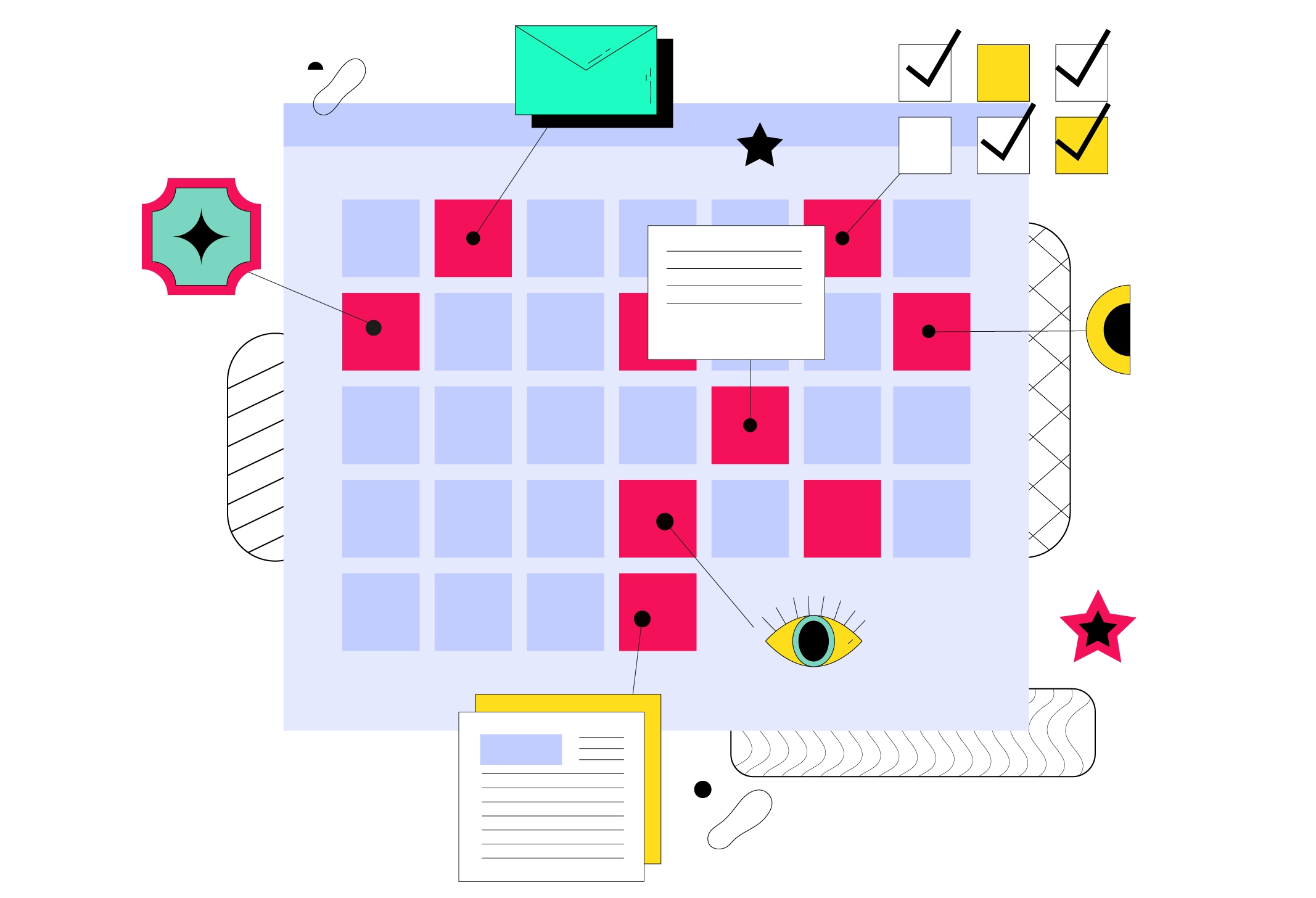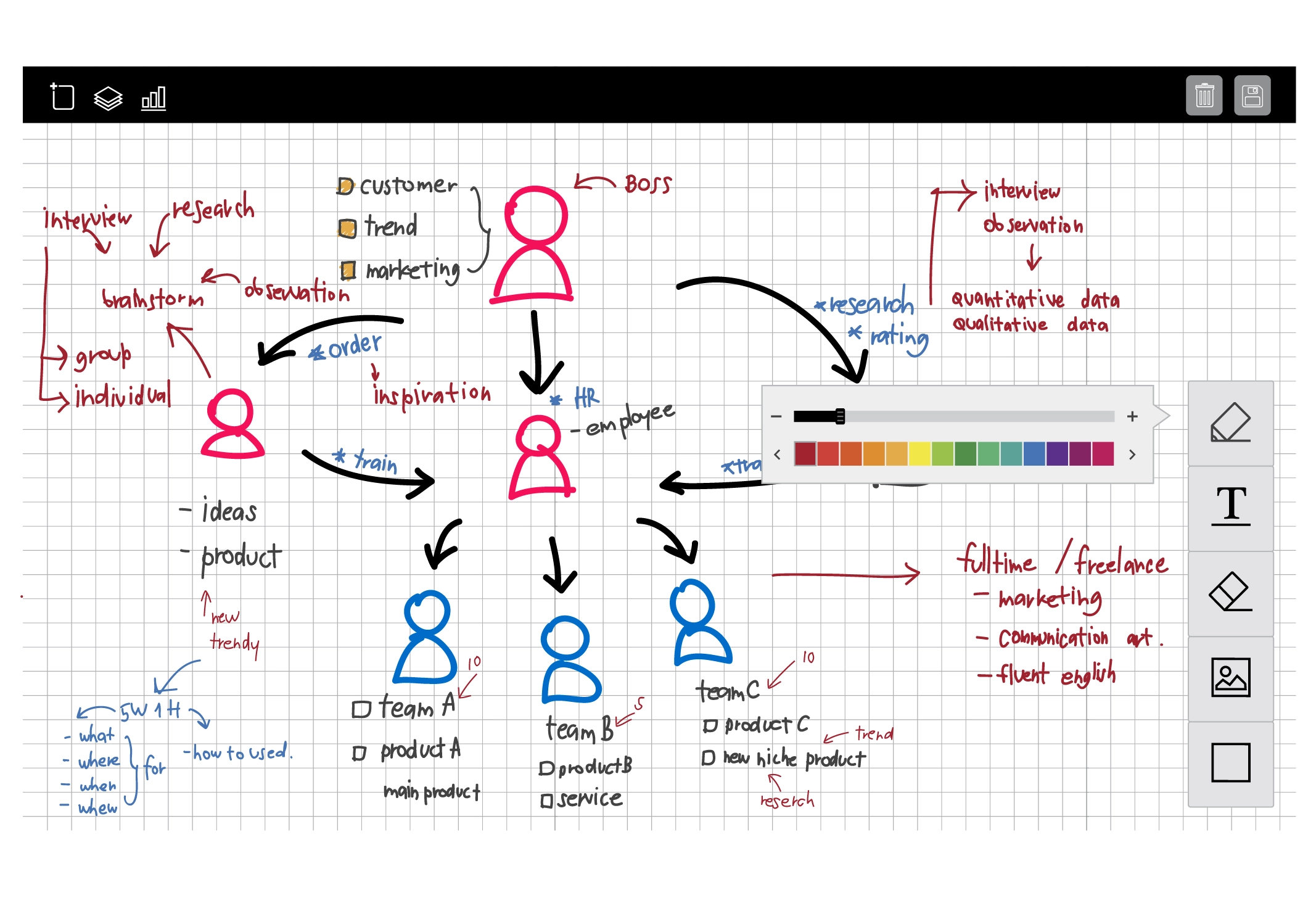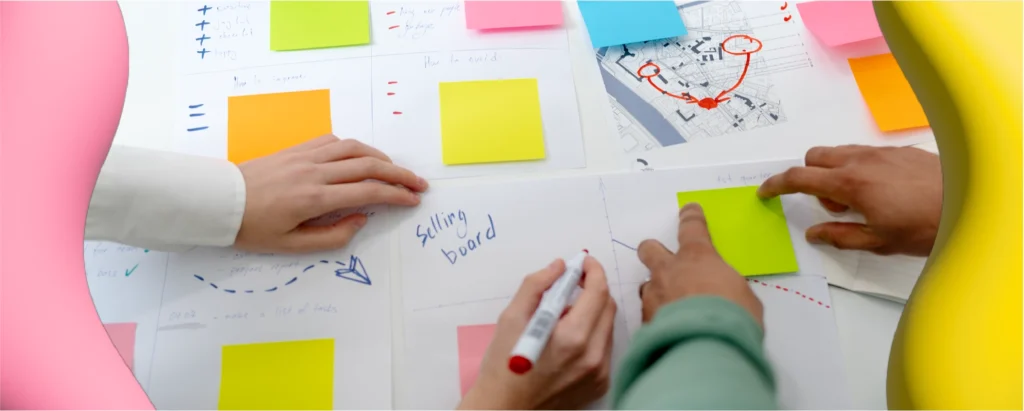An Elegant Synoptic Journey about Affinity Mapping
Affinity Mapping, never heard of it? Affinity Mapping is a method used in various fields of design thinking, user experience design, and project management to organize and synthesize large amounts of information or ideas. It involves grouping related concepts, ideas, or data points based on their natural affinities or similarities. But when we take a glance at user research, affinity mapping is a collaborative method that is used to analyze all the qualitative data that is gathered from the user researchers. These data are collected via conducting interviews, observation, or surveys. Moreover, the affinity mapping process helps UX designers and researchers to organize and synthesize these insights into actionable insights into patterns and themes.

In UX research, affinity mapping collects information directly from users through methods like interviews, watching how they use a product, or asking them questions in surveys. This info can include things they say, what we see them do, problems they face, how they act, what they like, and any other important details about their experience with a product or service. But are you curious to know more about how affinity mapping works? Within this piece of blog, we have added insight into Affinity mapping in UX. Also, we have added the reason why affinity mapping is significant in the user research role. Besides, if you want to understand how affinity mapping works in the synthesizing process followed by the ideation process, don’t worry we have peppered down the additional insight as well. So let’s explore this blog together!
Charting about the Essence of Affinity Mapping UX
Affinity mapping is like organizing a baffled potluck dinner where everyone brings a dish. Some arrive with lasagna, others with sushi, and one ambitious soul even brings a homemade pineapple pizza. As you glance at your table, you realize there’s no clear order to the spread. That’s where affinity mapping swoops in like a superhero waiter, and helps in organizing the chaotic mess into logical categories: appetizers, mains, desserts, and “questionable food experiments. Affinity mapping, also known as Affinity diagram, is a method that is used to organize a huge amount of information into meaningful groups and themes. It’s particularly useful in fields like design thinking, project management, and qualitative research where diverse data sets need consolidation.

The process typically begins with collecting various data points, such as user feedback, observations, or brainstorming ideas, which are then written on individual sticky notes or cards. Yes, agreeing to the point here, writing everything in sticky notes at a time feels like everything is organized in your way! Next, participants group all the related notes based on common themes, patterns, or similarities they perceive. These groupings emerge organically through discussion and consensus-building among participants. Once all notes are grouped, then these clusters are often labeled to represent categories or concepts. Affinity mapping helps teams make sense of complex data sets, and to identify the priorities for action. It encourages collaboration, and diverse perspectives, by visually organizing information in a way that is easily digestible and actionable. Also, the process promotes creativity and innovation as it allows participants to explore connections and relationships between disparate pieces of information.
Knocking the convergence; Why Affinity Mapping in UX is Essential?
Before discussing more on how to create an affinity map, let’s imagine here you’re building a house, so you wouldn’t start hammering nails without a blueprint, right? Affinity mapping serves as that blueprint for any UX designers and product teams, to help them understand every user’s needs and pain points. Besides, by identifying these common pain points, preferences, and the behavior of all the users, design teams can prioritize design decisions that have the most significant impact. And also it is important because it turns a chaotic mess of user feedback, ideas, and observations into organized insights. Affinity mapping in UX also allows designers to spot patterns, identify all the common themes, and prioritize improvements as well.

By grouping all the similar issues, UX designers can focus their efforts on addressing the most critical issues first which makes sure that the final product meets user expectations. Affinity mapping offers collaboration among team members, as everyone gets a chance to contribute their perspectives and ideas. Plus, it’s a visual process, which makes it easy for everyone to understand and engage with the data. Ultimately, UX affinity mapping leads to better products and happier users. It’s like having a GPS for your design process that completely guides a UX designer in the right direction and helps to reach your destination smoothly.
Navigating the Insight about creating a UX research Affinity Map for your business
Creating an affinity mapping is as simple as brewing a morning cup of coffee for yourself. First, start by collecting and gathering all the UX research data. This practice will help a designer to make strategic choices based on these collected data rather than making assumptions or any personal preferences. This method helps in avoiding the pitfalls of designing that are directed towards misconceptions. Have a clear mind about what specific information is needed. There are a plethora of UX research methods, one of the basic methods is the standard technique which includes user interviews, surveys, and competition analysis. Then further conduct individual analysis. This practice helps UX researcher team members add their unique perspectives when designing affinity maps. The individual study method serves as a collaborative brainstorming that allows team members to churn up the ideas independently before sharing them during the labeling phase.
Grouping is the next method to create a UX research affinity mapping to categorize and organize all the related information, and ideas, into a cluster based on common themes or patterns. The main objective of grouping is to bring all the structure to the raw data, hence making it easier to analyze and bring out meaningful patterns. Also, grouping helps to identify all the patterns and similarities within the collected data. Generally, affinity mapping in UX typically involves dealing with a large amount of information, so organizing this information grouping helps in managing this information which makes it easier for the UX designer team to comprehend.
Now moving to the labeling method, as it provides a descriptive title or category. This step helps to clarify the overarching themes and make sure that the team members can understand the content of each set of groups at one glance. Also, labeling helps to ensure the grouped insights are oriented with all the user needs and experiences. The last segment, known as iteration, allows a constant check-up of a UX research Affinity mapping with regular updates as new research data becomes available. Moreover, make sure to visit and revisit the affinity map to make sure that it remains a valuable tool for informing UX design decisions and driving business success.
Synergizing the Insights of Affinity Mapping for Synthesizing Research
Synthesizing qualitative research is organizing a large amount of collected data to identify the user pain point and the future perspective your user might want from the product. Supposedly a UX researcher has conducted interviews and scripted down every detail for every interview. The next procedure is clubbing all together and magnifying the patterns across the user interviews. But if you are new to the atmosphere of how to synthesize Affinity mapping in UX research, don’t fret, here are some basic tips to synthesize affinity research. First and foremost, write all the collected data points on sticky notes because it is imperative to understand that every single comment or opinion from each respective interviewee holds a vital data point.
So have a telescopic view of every note, and write down anything that might stand out as a very important point in a sticky note. Now, take a sticky note, read it, and put it in one place. Take another sticky note, read it, and then check if this current note is relatable to the first one. If it is, stick it beside the first sticky note, but make sure not to compact it together. Try to figure out how each note is quite related to another one, and keep in mind that the main goal of conducting a UX research Affinity mapping for synthesizing is to find all the connections of these sticky notes that will be beneficial in the future. Once this is done, then proceed with adding headings for each cluster on the wall. The last practice or step is to extract insights about the collected data by grouping all the clusters into larger ones or breaking them down into certain subcategories. At every phase of the sorting ensure that it should reflect on the patterns you are seeking and how they can relate to the research questions. Always plan accordingly and take a picture of the wall to consider translating the entire affinity map into a document whenever necessary.
Magnifying the Concept of Affinity mapping for Ideation
Now let’s discuss the ideation in UX research Affinity mapping as some of the processes are the same but let’s look deeply into it. In the ideate process, write all the gathered data and ideas on a sticky note and give your team members an ideal time limit to sketch their entire ideas. Every idea should be scripted down on different sticky notes. Moreover, the idea can be in any form like a low-fidelity wireframe, a design of a user flow, or maybe a quick phrase that entirely conveys the ideas.
Then the next step is to spend some time with each idea and sort them accordingly into groups or categories that are based on theme. Then sort all the ideas and identify the key ideas as well. The last part is to collect all the ideas and discuss with the respective design team the viable ideas based on the ideas there. You must discuss and put forth the concerns as well. Moreover, prioritize and select the ideas the design team has selected. So these are the ideal procedures for carrying out affinity mapping for any ideation process.
Drawing the Curtain of Thoughts about UX Research Affinity Mapping with Pattem Digital
Moving towards ending this blog with a thought about affinity mapping, it acts like a powerful tool across several domains, particularly in UX design, by transforming chaotic data into actionable insights. Also by facilitating collaboration, promoting creativity, and aiding in prioritization, affinity mapping empowers teams to create better products and enhance user experiences. Whether synthesizing research findings, generating innovative ideas, or organizing complex information, the affinity mapping process provides a structured approach to extract meaningful patterns and drive informed decision-making.
Now, let’s focus on Pattem Digital, as they are the leading UX research services company known for their innovative solutions in the digital space. With a focus on user-centric design and innovative technology, Pattem Digital leverages methods like affinity mapping to streamline its UX design processes, ensuring that its clients receive tailored solutions that meet user needs effectively.





